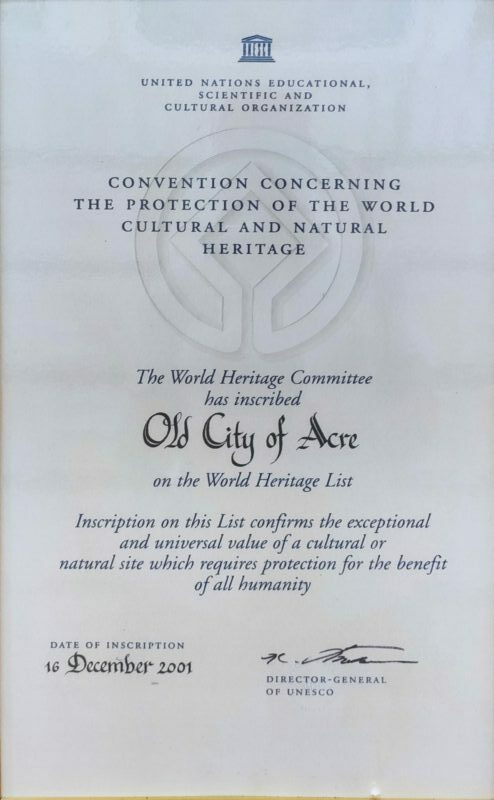The declaration of Old Akko as a World Heritage Site is a reflection of the global recognition of Old Akko as a city that was home to numerous cultures. Moreover, it attracts research projects, promotes learning and is a coveted tourist site. Old Akko appears on Unesco’s website and as such, its historical relevance is universally recognized. It is also a magnet for travelers seeking unique spots around the world.
Content of the Declaration: Old City of Akko
Old Akko is immortalized in the World Heritage Site List according to the 1972 Convention concerning the Protection of the World Cultural and Natural Heritage. The immortalization of Old Akko reflects its exceptional universal value that is worthy of preservation for the sake of humanity. Old Akko, a historic walled port city, was continuously populated since the Phoenician period, within the domain of the Tribe of Asher. Remains from the Crusader City from 1104 to 1291, which have remained virtually intact both above and below today’s street level, paint an extraordinary picture of the layout and structure of the Crusader Kingdom of Jerusalem. The present city has been defined as a fortified Ottoman city since the 18th and 19th centuries, with typical urban components such as a citadel, mosques, khans and baths.
2001 – Old Akko is declared a World Heritage Site by UNESCO. Seven years later, in 2008, the Holy Baha’i sites in the Western Galilee and Haifa were also declared as a World Heritage Site. Some of these sites, including the holiest place for the Baha’i religion ‘Al Bahji’, are located in Akko. Consequently, Akko is the only city in Israel with two different UNESCO World Heritage Sites.

